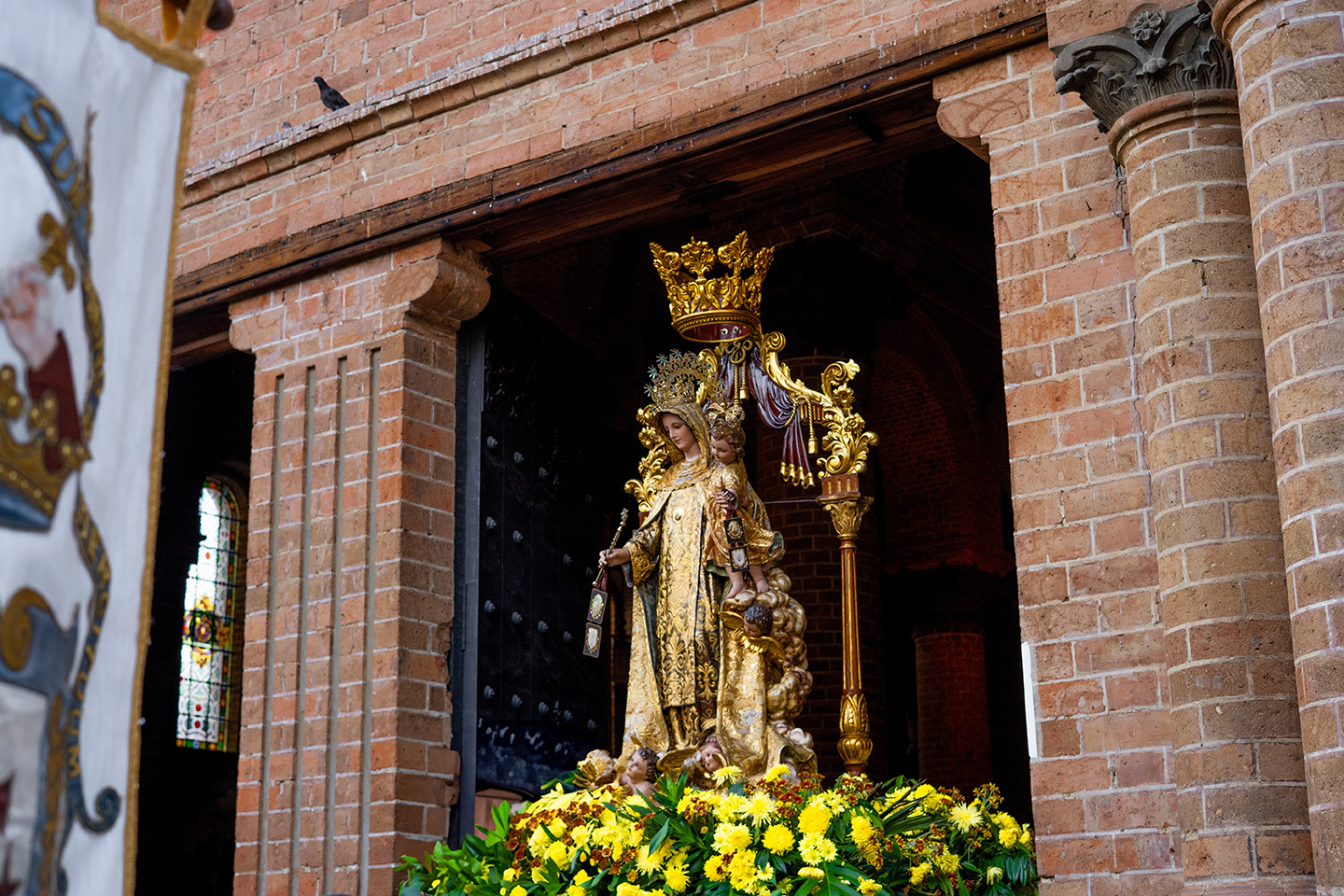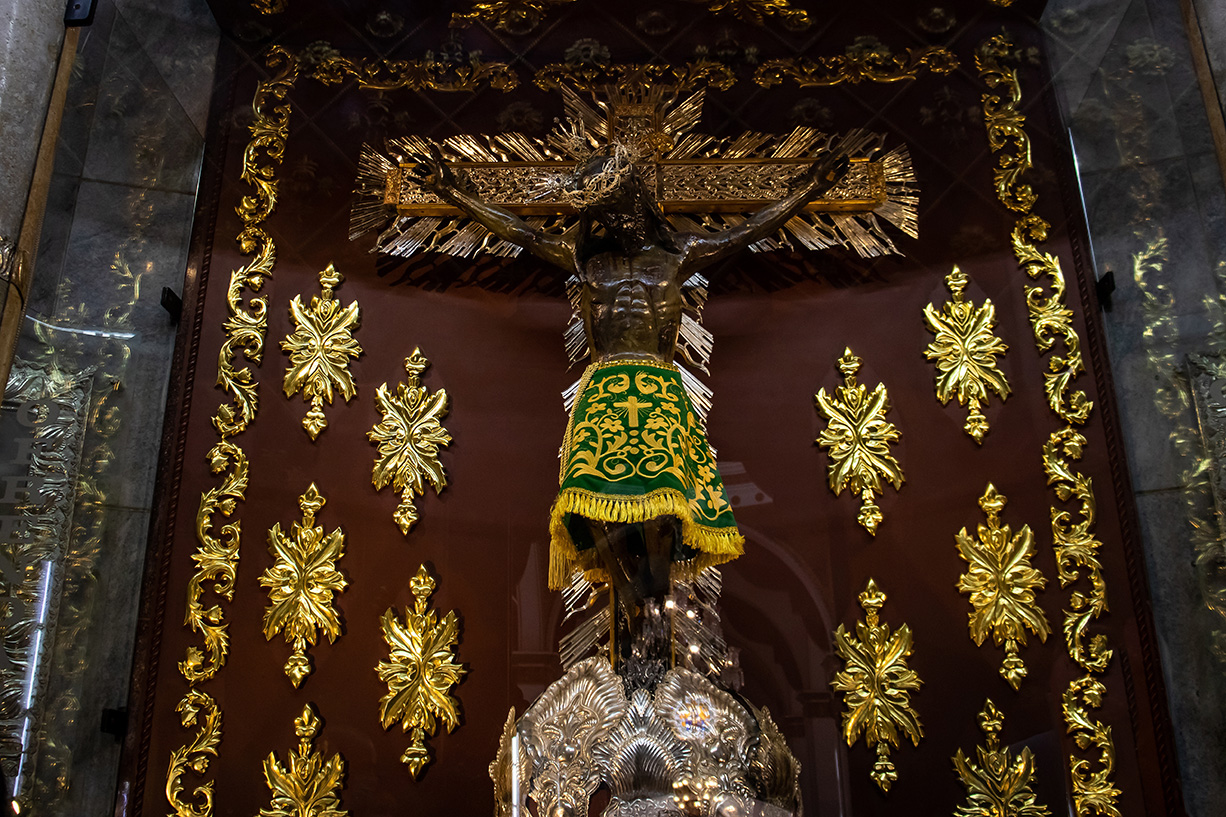Syncretic Catholic-Indigenous Traditions of Peru
Peru’s culture weaves together languages, religious practices, and holidays with diverse origins.
As Spain conquered the Inca and took over Peru, Jesuit and Dominican missionaries brought Catholicism to the country.
Many Peruvians converted to the new religion. But, rather than discard their earlier traditions, native Peruvians instead integrated Catholic beliefs and practices into their indigenous faiths.
For example, many Quechua people of the Andes held (and still hold) a strong faith in Pachamama, a maternal goddess of the Earth. When adopting Catholicism, they wove together their traditional faith and practices revering Pachamama with their new faith revering the Virgin Mary.
Today, for many, the parish is the hub of their community, and faith traditions are seamlessly integrated into grand celebrations and small daily rituals.
Here are a few of the unique, syncretic traditions blending Catholicism with Quechua, Aymara, and the remnants of Inca culture.
Catholic Peruvian Traditions In Daily Life
Multi-Language Mass
Over 60% of Peruvians attend church at least once a month, with most attending Catholic churches. Parishes with the strongest community ties are usually those offering sermons and worship services in the local languages.
For example, San Pedro Apostol in Pisac, a town in Peru’s Sacred Valley, is central to the community. Officials hold mass in the native Quechua language every Sunday at 11:00 AM, and people travel from the wider Cusco and Andean Highlands region to attend each week.

Sunday Worship Procession: A Peruvian Tradition
Language is just one way parishioners of San Pedro Apostol have woven their Andean customs into the service. They also start each morning with a procession.
Everyone arrives wearing traditional, vibrant highland clothes, and the varayoc (the community’s spiritual leader) starts the parade. Men play horns and conch shells, and the parishioners stride into the church together: a strong, organized group, united in communal worship.
Baptisms
In many Peruvian communities, baptisms are huge celebrations. Popular “revival style” events can include thousands of people getting baptized on the same day.
Yet, smaller, community events are more common.
While Peruvian Catholics may choose to baptize their baby soon after birth, most wait until the Easter Vigil. During the night between Saturday’s sunset and sunrise on Easter Sunday, a parish brings together all those in the community ready for baptism, first communion rites, and confirmation.
Doing all in the same night strengthens the connection and bonds among everyone in the parish community.
Peruvian Traditions Celebrating Catholic-Indigenous Holidays
Holidays in Peru often blend the traditions of the ancient Inca, the contemporary Indigenous Quechua people of the Andes, and traditions introduced by the Spanish and other post-Colombian groups.

Qhapaq Raymi + Christmas
Qhapaq Raymi is a festival celebrating the harmony of the Sun and the Moon, traditionally celebrated on December 21st. This is Summer Solstice, the day with the most sunlight in the Southern hemisphere.
In pre-Colombian eras, Qhapaq Raymi was a coming of age day. Today, the ritual dances like the Qolla, Tinku, and Huayno are now woven into Peruvian Christmas celebrations. Chicha de jora, a corn drink traditionally part of Summer Solstice, is now a popular beverage on Peruvians’ Christmas Eve.
El Señor de Los Milagros (Lord of Miracles)
El Señor de Los Milagros (Lord of Miracles) is celebrated with processesions throughout October. The festival centers on a painting, Cristo Moreno (Brown Christ), created by an Angolan slave in Pachacamilla.
It came to represent El Señor de los Milagros, an aspect of Christ that is the patron saint of immigrants and Peru’s downtrodden.
Tradition of Miracles & Cakes
According to tradition, the painting has miraculous qualities, surviving earthquakes and supernaturally healing people. One such healing is described in the legend of Doña Pepa.
A freed former slave, Doña Pepa pilgrimaged to make offerings to the painting in Lima, praying to El Señor de Los Milagros to heal the paralysis in her arms. She was miraculously healed, and created a colorful layer cake to celebrate.
Today, festive Turrón de Doña Pepa cakes have become a Lord of Miracles tradition. They’re baked and served for every procession, each year.

Fiesta de las Cruces / Cruz Velacuy (Corpus Christi)
This annual holiday is part pilgrimage, part vigil. In neighborhoods across Cusco, devout Andean Catholics carry crosses and candles. They congregate at different public locations with cross displays to pray and hold candlelight vigils.
While the vigils can be quiet and reflective, the walks are festive. Live music accompanies the processions, and the walk to the final gathering point is boisterous and joyful. Among the musicians are danzantes de tijeras: indigenous folk musicians and dancers whose traditions predate Columbus by centuries.
On the final day, the local host of the neighborhood’s Fiesta de las Cruces holds a “farewell” party. The finale’s feast traditionally includes Cusqueñan Chicharrón (pork fried in its own fat) Chiri Uchu (Peruvian cold spiced chili), and Timpu / Puchero (an “everything” stew popular at Peruvian pot lucks).
Experience Peru’s Spirit With Caravan
Caravan’s eight-day Tour of Peru with Machu Picchu offers visitors the opportunity to explore Peru’s many facets. Whether you’re seeking spiritual experiences, ancient mysteries, or natural wonders, the Peru Tour has something to offer.
Phone 1-800-227-2826 to book your spot. To learn more, call our team at 1-312-321-9800.
